Food
The artichoke and how to eat it
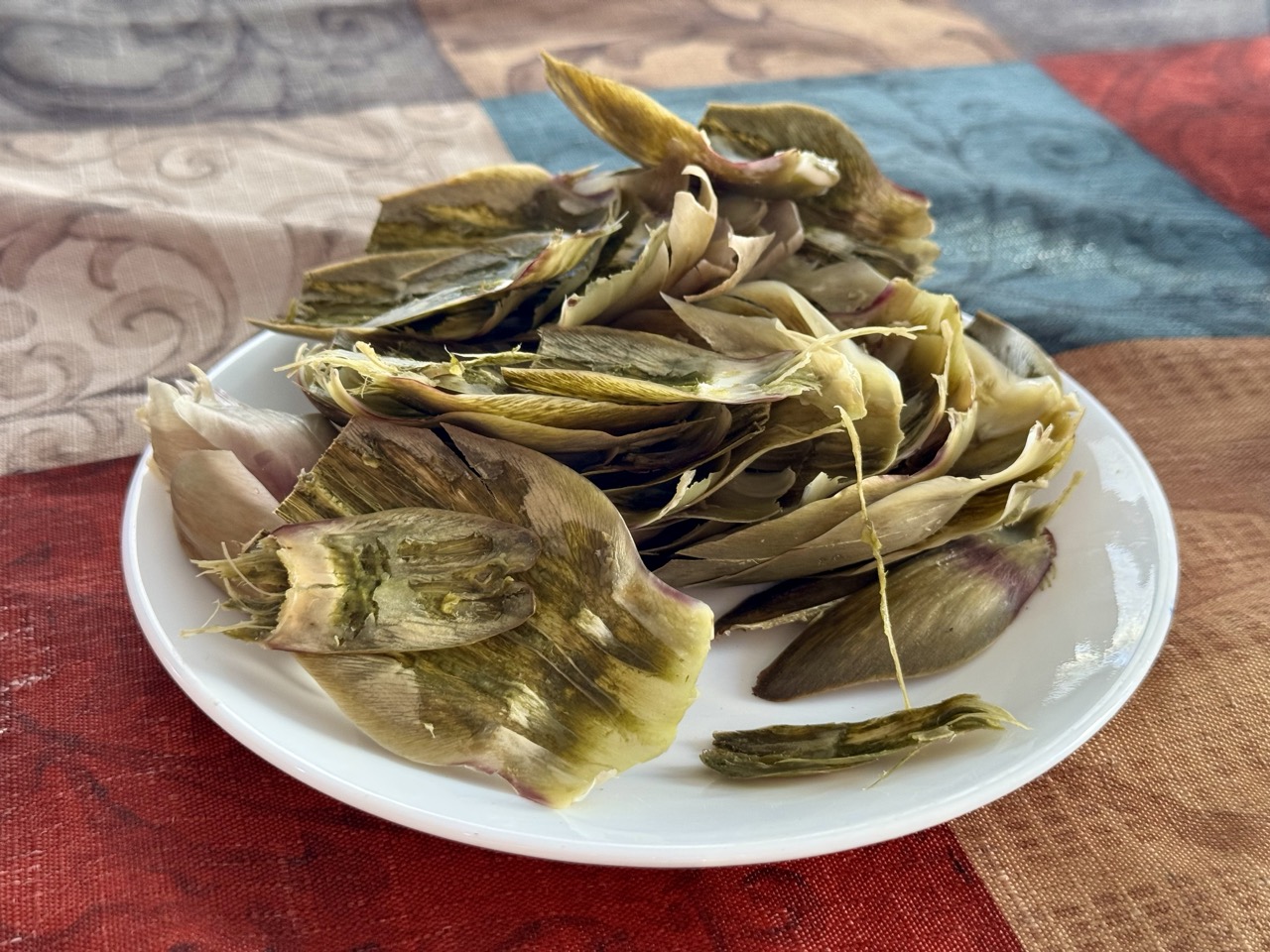
Some people have never eaten a whole steamed artichoke. This is…tragic.
Why should you eat an artichoke?
- Because it’s the easiest thing you’ll cook this month. Seriously. No knife skills required. It’s a vegetable and it’s easier than Kraft mac and cheese.
- Because it’s a frontrunner for “tastiest plant.” I keep trying to think of a vegetable to compare it to, but it’s milder than all of them. It sort of tastes like butter and sage?
- Because it’s a calming ritual. Eating an artichoke takes about 20 minutes and involves three distinct stages, each better than the last.
I don’t know what else you want from me. Is it good for you? Yeah, dude, it’s a vegetable. Is it a superfood? Probably. It’s got folate and magnesium and stuff. Is it expensive? A little, yeah. About $4 a head in the off season. Goes on sale a few times a year. Even at full price it’s worth the occasional splurge, though.
A whole artichoke is not the same as canned artichoke hearts. Don’t even talk to me about canned artichoke hearts.
Its spikes may seem intimidating, like it doesn’t want to be eaten. (The ancient Greeks called it kaktos.) But look, the recipe is two sentences long:
Cooking instructions
Steam the artichoke for about half an hour.
It’s done when the outer leaves come off with a firm but gentle tug.
Cooking objections
“I don’t have a steamer basket.” Okay. Put the artichoke in a pot with about an inch of water, throw the lid on, and simmer till done.
“I don’t have a pot.” You can cook an artichoke in a rice cooker. You can cook it in an Instant Pot. You can cook it in a microwave. Please. You must have something that can boil water.
“It looks poky.” Yeah, it’s a thistle. You can snip the leaf tips off with scissors if you want. Don’t cut off too much.
“The stem is getting in the way.” Cut it off. Leave half an inch or so to hold the artichoke together.
“I can’t cook anything without burning it.” Steaming and simmering are foolproof. As long as the pot doesn’t run out of water, you’ll be fine.
Eating instructions
You’ll want some kind of dip. (Or not. I’m not the boss of you.)
Melted butter is easy. Or any kind of salad dressing. Personally, I like to put a spoonful of mayonnaise in a bowl, thin it out with a splash of milk, and add a little salt. I’m fancy like that.
Phase 1: Outer leaves
Pull off a leaf. It looks like this.
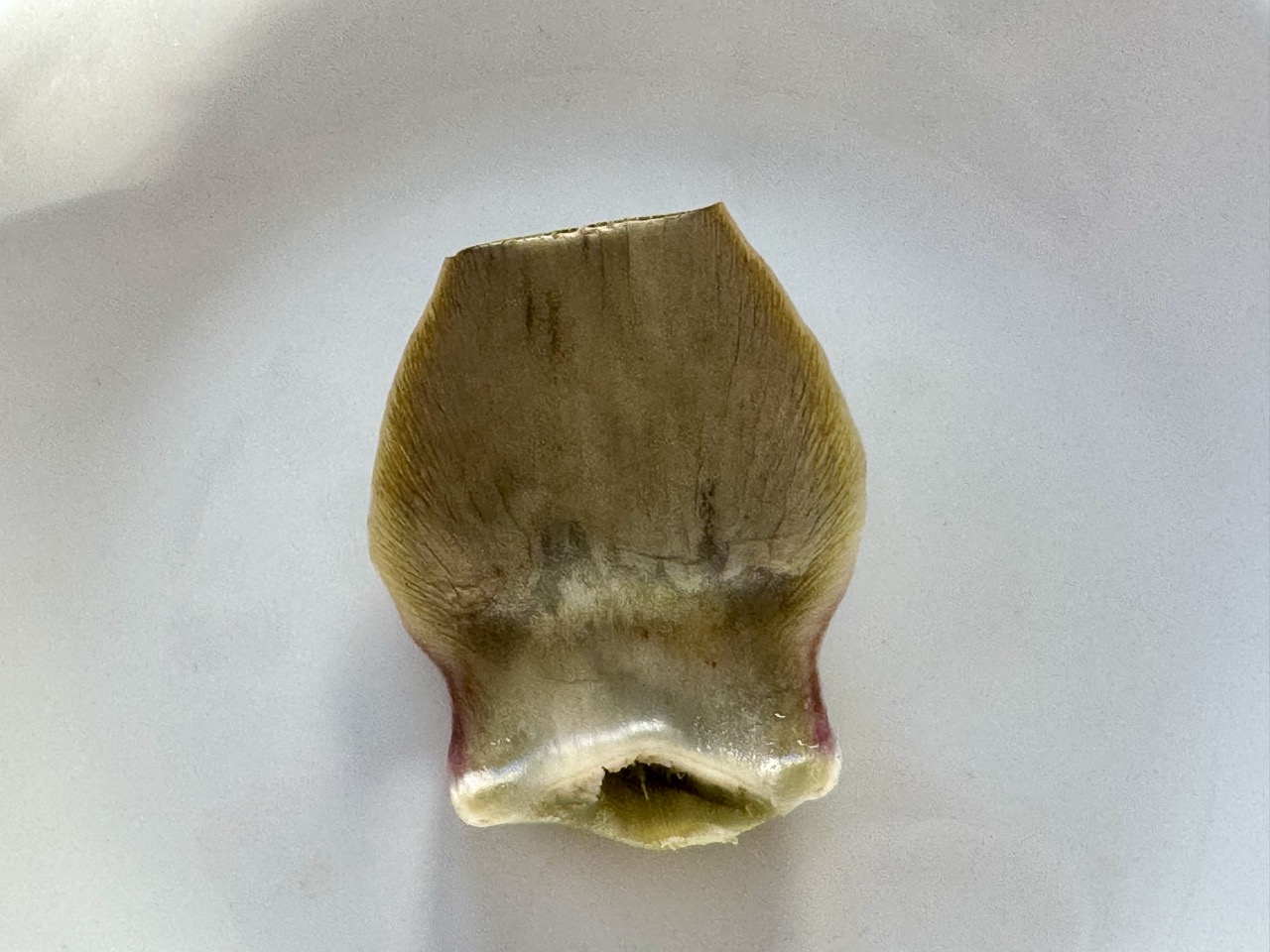
This one is snipped. If yours isn’t, there will be a sharp point at the top.
Don’t eat the entire leaf. The outside is tough and fibrous. The softer inside is where the flavor is. To get it, you’ll need to:
- hold the tip
- put the leaf almost all the way in your mouth
- clamp down with your teeth
- sliiiiiide the leaf out
like you’re scraping the cheese off a leather pizza slice.
Don’t forget about your dip. Dunk, then slide. Nature’s potato chips.
Phase 2: Inner leaves
The leaves get tenderer as you go inward. Some of them will shred while you’re scraping them and you’ll have to pick bits of artichoke paper out of your teeth. (Hey, I never said this would make you look smart.) Eventually you’ll find leaves that don’t have the fortitude for teeth-scraping. They’re purple on top, pale on bottom, and the pale part bites off like a gummy bear’s head.
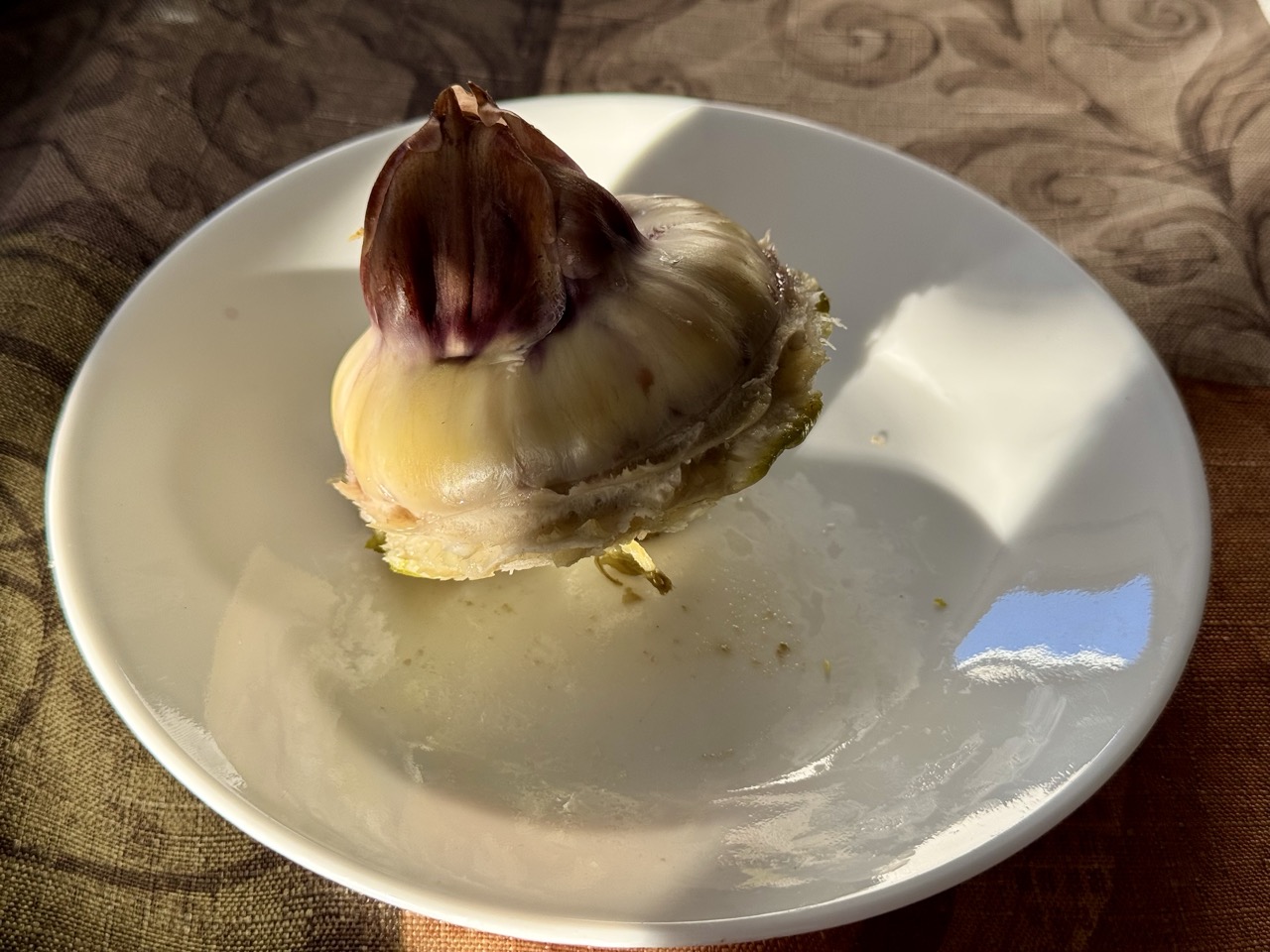
You can dunk and bite one at a time, if you want, but there’s a more efficient way.
Grasp the top of the cluster with your fingertips, then pull. A whole skirt of leaves will come up at once, like this.
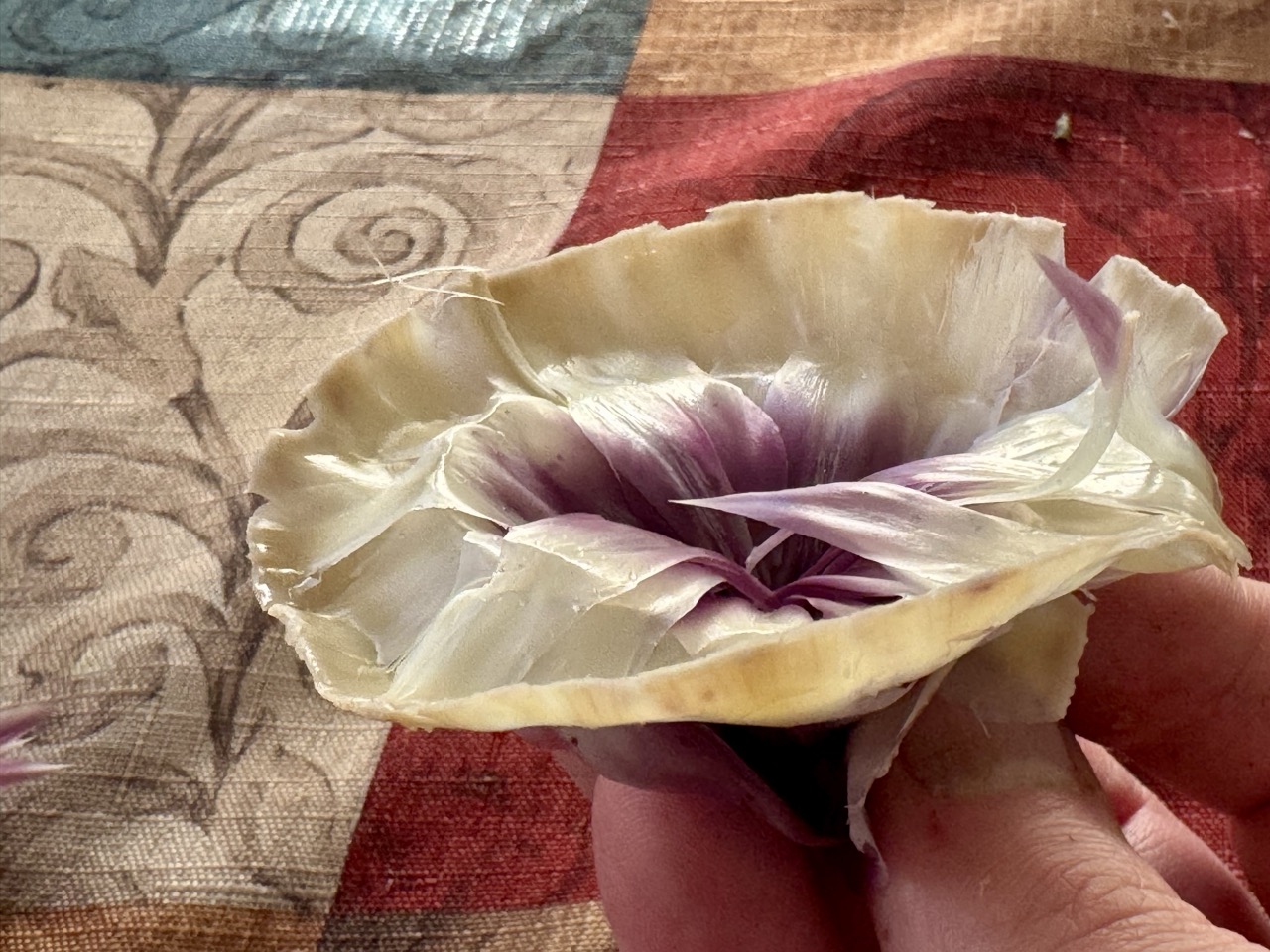
You can dip the outer ring of the skirt and bite it all off in one go. Most artichokes have two or three layers like this.
Phase 3: Heart
Once the skirts are gone, the artichoke’s last line of defense is a cone of golden hair called the “choke.”
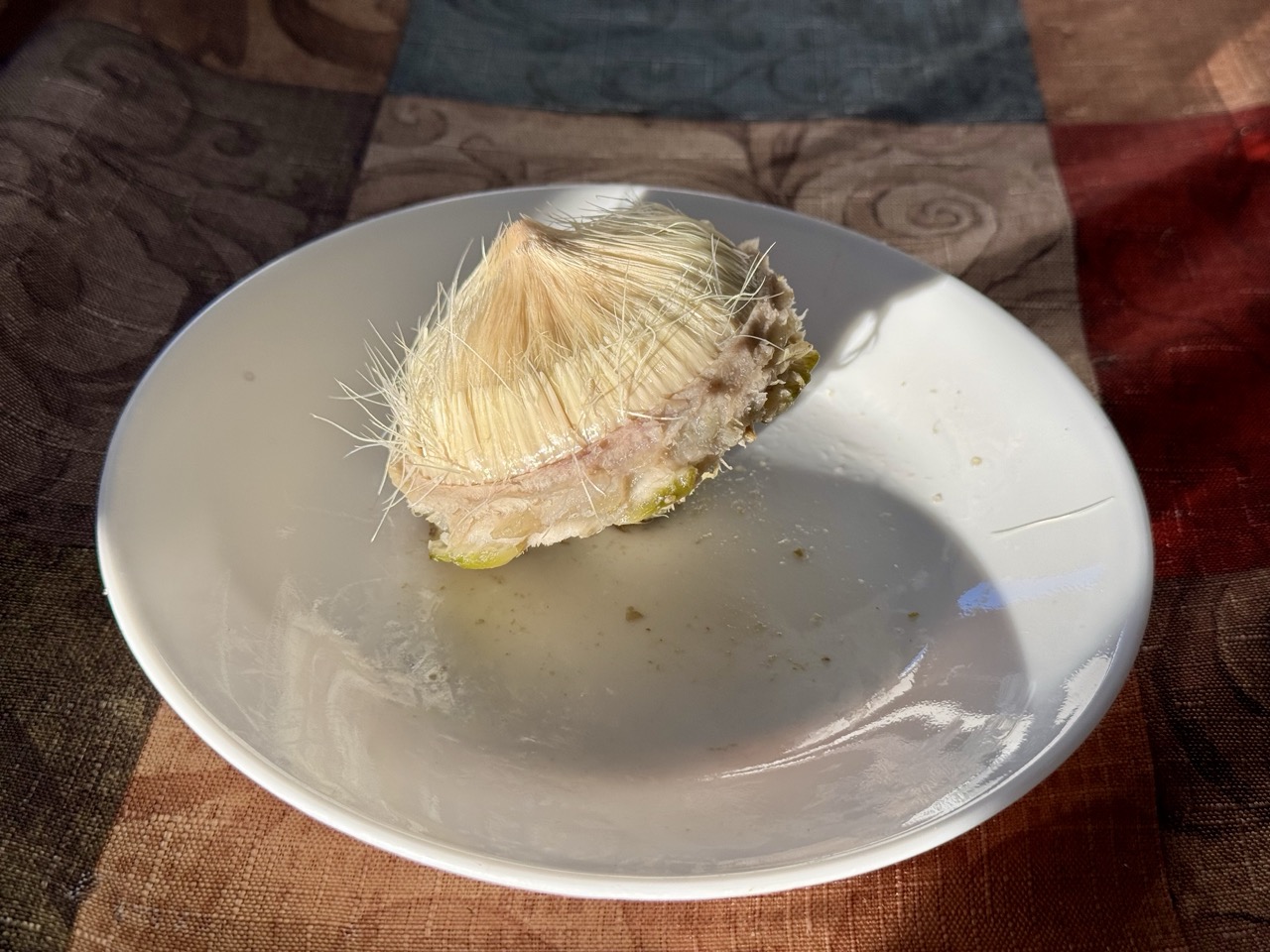
Use a spoon to scrape it off. You’ll need a firm hand, but it should be a pretty clean operation if you scrape right at the roots.
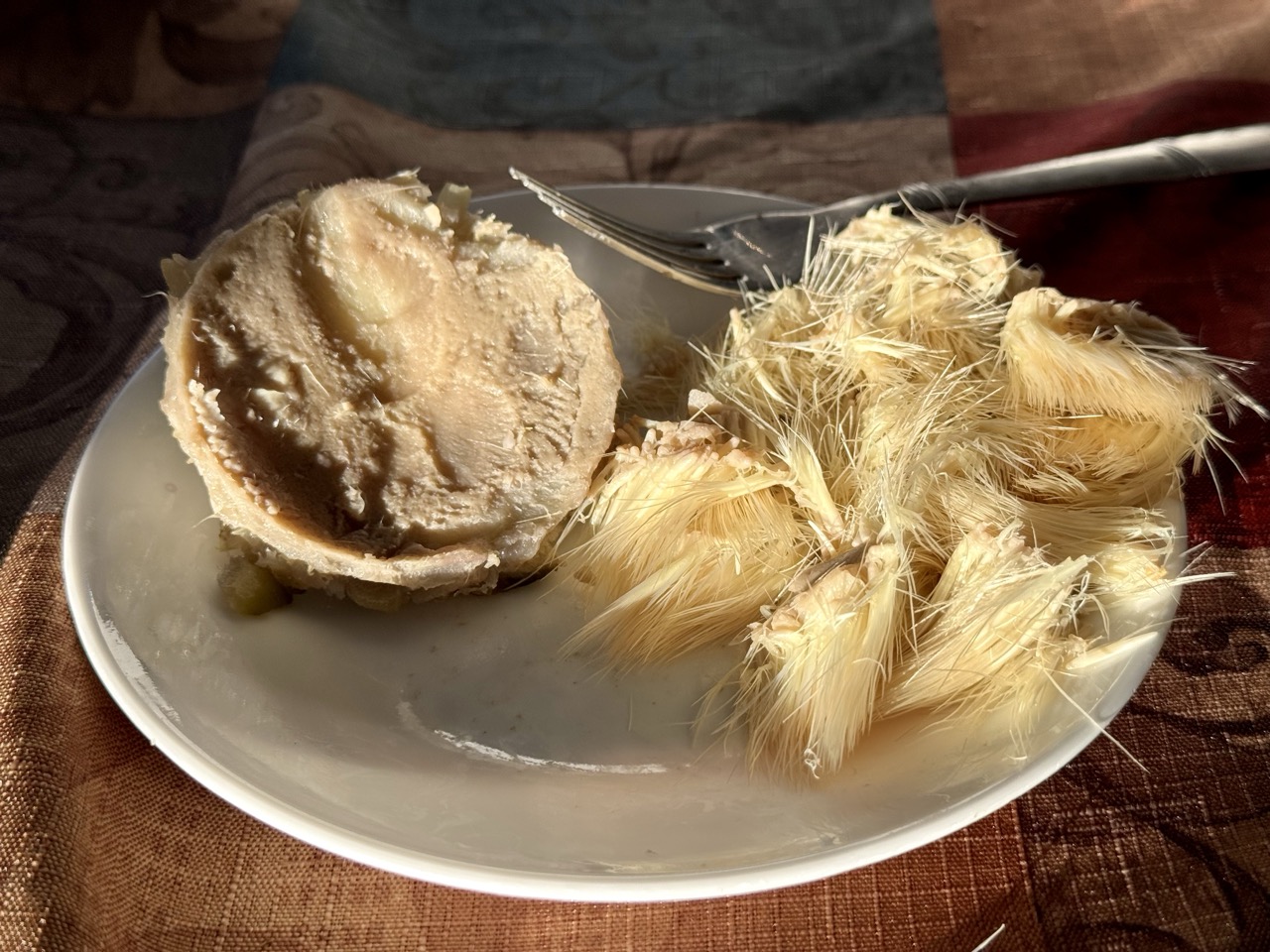
I used a fork because I had one handy and I’ve done this before. I still recommend the spoon.
Throw away the hair. What remains, the “heart,” is entirely edible. It’s tender, savory, and smooth, your reward for defeating the rest of the artichoke in battle. Most people agree it’s the best part. But it shouldn’t be the only part. The artichoke is an indivisible experience; if you skip the leaves, the heart won’t taste as good. Rules are rules.
Now dip and eat. You’ve earned it.